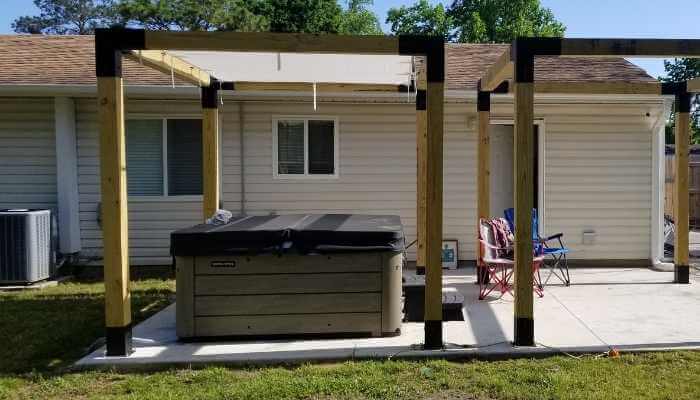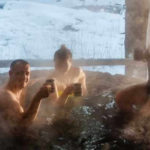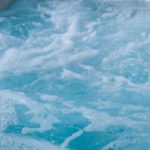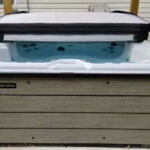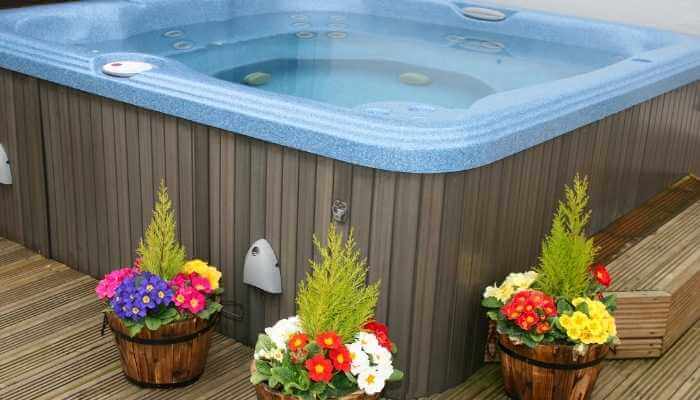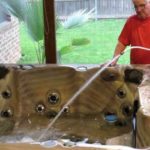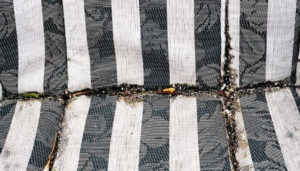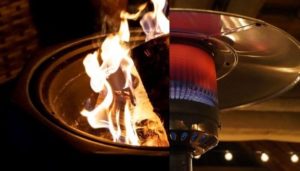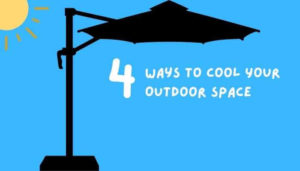There are a lot of expenses that go into the operation of a hot tub. There are chemicals. There are filters and other equipment. But the most important expense for most homeowners to consider is the additional electricity they will need to budget for.
On average, the energy cost to run a large, permanent hot tub is $1 per day for 120-volt tubs & more for 240-volt tubs. On average, hot tubs add $50 to a monthly power bill. There are a lot of factors that contribute to this cost. There are also costs beyond electricity that should be considered.
The good news is, that the cost of the energy your hot tub takes up in a month’s time doesn’t compare to the cost of a few hours at a local spa! Crazy, huh? But it costs something, so let’s break down what factors into the cost of running a hot tub and how that may differ at various times in the year.
What Affects the Cost of Running a Hot Tub?
Most manufacturers want you to believe that running a hot tub is only going to cost you at most $1 per day. Some will state it takes about $50 extra per month.
The amount of electricity used will give you an estimate of how much it will cost to run your hot tub. But different hot tubs use water heaters and circulation pumps that may have very different voltage requirements. The most common voltage requirements are either going to be 120-volt which uses 1500watts or 240-volt which uses 6000watts.
You also need to take into consideration the local energy cost per kilowatt-hour (kWh) where the hot tub is located. This can vary from state to state and even from community to community. As of the writing of this article, electricity costs on average across the United States are 13¢ per kilowatt-hour. There are some outliers such as Hawaii, Alaska, New England states, and California that raised the average a bit.
Also, if you turn your hot tub on and off again, you will expend more energy getting your hot tub’s temperature back up to where you want it from the temperature it has settled to. This is especially energy-consuming if this happens during the winter. That’s why it’s advisable to keep your hot tub running, even if you’re not using it, but at maybe at 5 degrees below the temperature, you like it to be when you’re in it.
Energy is spent by a hot tub while the hot tub isn’t even in use. Why? Because they need to keep the water heated and keep it circulating. So most of the energy during these periods is used up by the circulating pump and not the heater. Thing is, it’s not a huge amount. It’s like, a maintenance amount of energy in preparation for the main event.
The main event for a hot tub is when it’s in full use and you’re in it; especially during cold weather. Once the cover is off, and cold air is on the surface, air bubbles are being pushed through the water, the hot water evaporates, and the temperature begins to fall. This will make that heater work a lot more to keep the temperature as close to the ideal as possible. Lights and other accessories on the hot tub add to the energy consumption.
Everything from the size of your tub, the thermostat setting, whether you use an extra thermal insulator, the age of the water heater, and the quality of the insulation on your tub affect the energy used and therefore the cost to run your hot tub.
How Do I Calculate How Much On Average It Costs to Run a Hot Tub?
Let’s keep the average cost to run your hot tub focused on the actual main event – the times you are in the hot tub and the jets are going and the heater and circulation are doing their best to maintain the temperature you have chosen.

Did You Know?
1 kilowatt = 1000 watts. So, to convert wattage to kilowatts – divide the watts by 1000.
These are just estimates, it could be lower or a bit higher.
A hot tub with a 120-volt heater will consume 3,000 watts while in use – or 3 kilowatt-hours (kWh). But we’ve got a larger one with the 240-volt that consumes let’s say 7,500 watts – or 7.5 kWh.
Multiply your hot tub’s kWh by the kWh rate on your electric bill — let’s use the national average, which is 13¢ — to find out how much each hour of hot tubbing will cost you:
39¢ per hour at 120 volts OR 97.5¢ per hour at 240 volts
And the shifts to this depend upon where you live, how much you actually use your tub, and what season it is. Remember, in winter your heater has to work a bit more to keep the water at the temperature you have designated.
What You Need to Remember About Running a Hot Tub During the Winter
Because your body temperature rests on average at 98.6°F (or 37°C), hot tubs are more relaxing when their temperature is set higher. However, too much of a good thing can be bad, so the hot tub temperature should be kept somewhere in the range of 98°F (36.7°C) and at a maximum of 104°F (40°C) during the winter.
It is advised that if you decide to lower the water temperature at all during winter, maybe you shouldn’t take it below 90°F (32.2°C). This can be heated quickly to the temperature you want it to be when you’re ready to use the hot tub. And just remember that the lower you leave the water, should the electricity go out, the quicker it will reach freezing – possibly bursting the pipes.
You shouldn’t actually cut the hot tub off during the winter or “winterize” it. However, you should definitely check to be sure the cover is working properly. If it’s not working, the heater will have to work harder to keep the temperature of the water appropriate. Keep the water clean and filtered and at the appropriate level.
Open the jets and waterfall lines if you’re expecting freezing weather so that the flow is stronger and there is less chance of freezing. However, do not leave the air controls on. The air controls push fresh air through the water to make more bubbles, and that can cool the water down, again – making that water heater work more.

Boost’s Tips
Also, listen to your hot tub – don’t ignore strange sounds and missing water. This can be an indication of something that could damage your investment. Check your filter and where you can see the pipes. If you need a service technician, call them.
What You Need to Remember About Running a Hot Tub During the Summer
You can keep your hot tub running all year round so that it maintains the heat needed and you can also adjust for changes in the season that can lower the temperature of the water just enough to make it refreshing during the hottest months while also keeping the circulation going.
78.8°F (26°C) is the recommended minimum temperature for hot tub water, even during the hottest part of summer by the CDC (Centers for Disease Control) and the CPSC (Consumer Product Safety Commission). It may be tempting to go lower due to hot weather or strenuous activity, but that would be a very unhealthy mistake. Don’t do it. You don’t want the health risks of letting your body temperature get too low.
This is going to probably cut the energy needed for your hot tub when it’s done and may knock off a bit of money spent on your energy. Just don’t think this will equal a huge amount of savings. Often it comes to only a few dollars.
In Conclusion
Besides the electricity, there are a lot of other expenses you need to take into consideration when you own and operate a hot tub. One such expense that you will need to consider is a good base for the hot tub.
If you have an existing specialty patio or deck and wonder if it will work with a hot tub, be sure to read my article about it.
You’ll need to completely drain and replace the water anywhere from one to six times per year. That all depends on the system you’ve purchased. So that means adding freshwater, which will cost money as well as heating that water up.
Just like any pool, hot tubs require chemical additives, which can add more than $100 per year in operating costs. Filters will need periodic replacement. If your hot tub uses UV light to fight bacteria, you may need to replace that special light bulb about once per year.
I have to let you know that since adding the hot tub to our power grid in February, we’ve seen a rise in our power consumption by about $65 since then. It has remained steady. Of course, we’ve also been running the heat in the house or the air conditioning a lot as well (welcome to North Carolina weather).
The water bill has remained right around the same – even though we filled the hot tub in February! I’m not sure how to explain this, other than, that we chose a good product. I can say that we enjoy the hot tub at least 3 nights per week and are very pleased with our purchase!
SOURCES:
